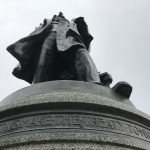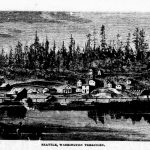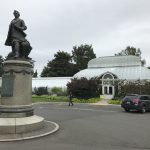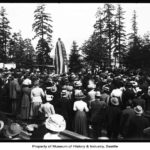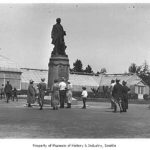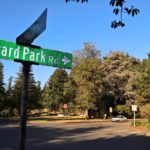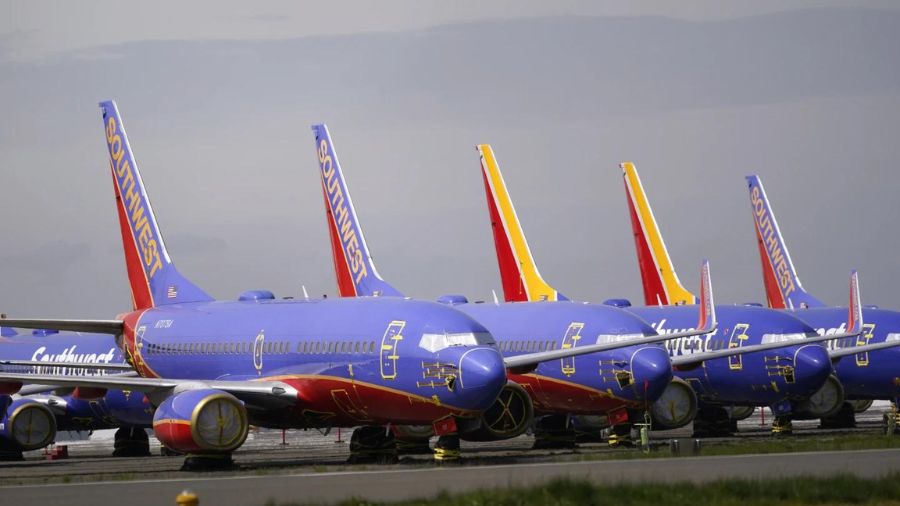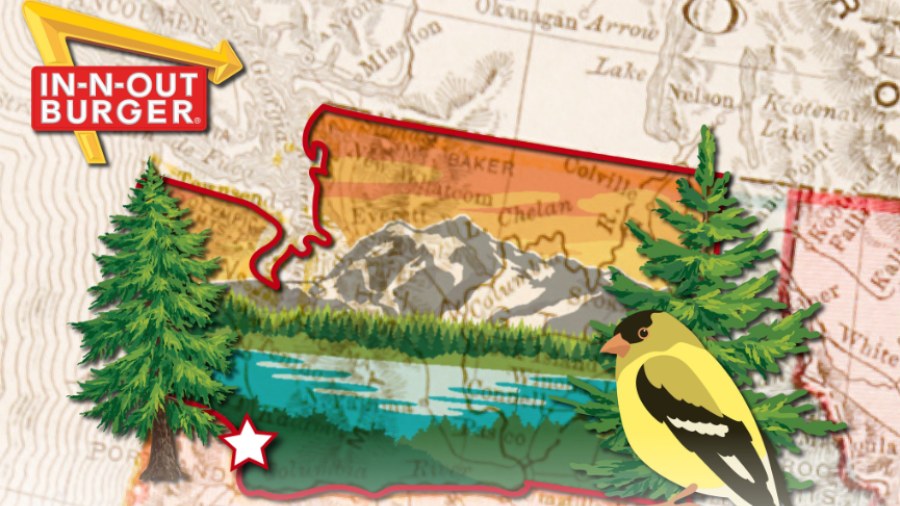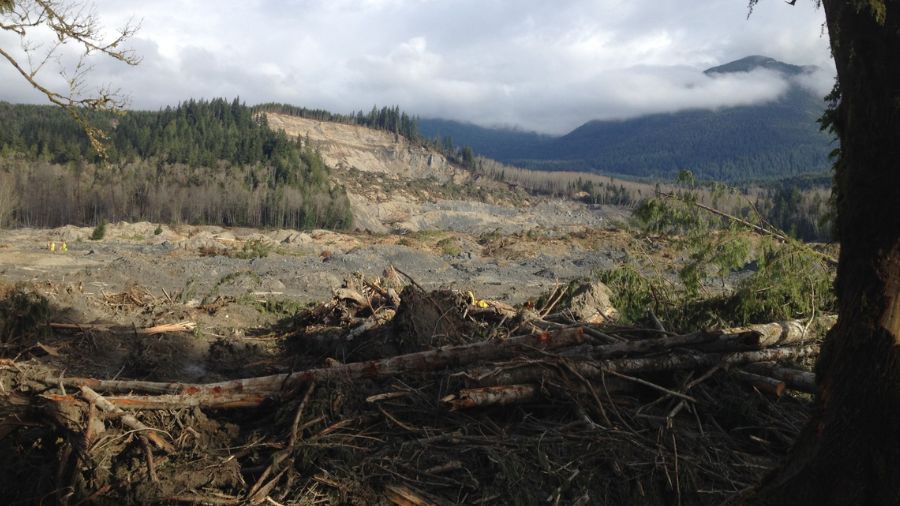Father of Alaska was ‘Uncle of Washington state’
Sep 15, 2017, 8:01 AM | Updated: Sep 9, 2021, 9:42 am
Why is there a statue of William H. Seward at Volunteer Park, and why is an elementary school and an entirely different Seattle park also named for Abraham Lincoln’s secretary of state?
That statue was dedicated 108 years ago this week on the University of Washington campus as part of the Alaska-Yukon-Pacific Exposition, Seattle’s first world’s fair. The AYPE celebrated, among other things, Seattle’s role as what we might now call “HQ1” of Alaska.
With the flurry of local hand-wringing the past week over Amazon’s search for “HQ2,” it’s worth looking back to a time when Seattle, as local historian and “Underground Tour” founder Bill Speidel wrote, was the “only city in the United States with its own private Territory.”
Our economy in Washington state is so diversified now, it’s easy to forget that Alaska was once the source of a much greater proportion of business activity in Washington Territory and then Washington state – going back to fur and fisheries in the 19th century, shipping, carrying US Mail, the Klondike Gold Rush, whaling, construction of the Alaska pipeline, and, more recently, air travel and the cruise ship industry.
And Alaska is still an economic force locally – accounting for, according to the Seattle Chamber of Commerce – 113,000 jobs and $6.2 billion in labor earnings in Washington in 2013.
Historian and author Walter Stahr says that none of this ever would have happened were it not for Secretary of State William H. Seward.
“The United States would not own Alaska if it were not for William Henry Seward,” Stahr said earlier this week. “There was no else in the Johnson administration [who cared about Alaska]. This is after the death of Lincoln, and the president is Andrew Johnson of Tennessee. [Johnson] doesn’t give a damn about Alaska, nobody else gives a damn about Alaska. But Seward, who was Secretary of State so it was in his department, was very interested.”
As Stahr describes him, Seward is a complex and fascinating figure, who unsuccessfully sought the presidential nomination in 1860, and who was later named Secretary of State by Abraham Lincoln.
Seward’s views on slavery seem particularly enlightened some 150 years later.
“Seward was what you might call a constitutional abolitionist,” said Stahr. “Before the war, he wanted to limit the spread of slavery into the West, wanted to get rid of slavery in places like the District of Columbia where it was under federal control, and hoped that gradually it would die out in the south, as indeed it had died out in places like New York, in his lifetime.”
Later, Stahr says, Seward supported the Emancipation Proclamation, and supported enlisting African Americans into the Union Army, and, after the Civil War, he supported the 13th amendment to the Constitution – that ended slavery.
Stahr says that to understand Seward connections to what became Alaska, you have to go back to the late 1860s. With the Civil War over and the issue of slavery settled, the federal government had time to look into other pressing issues and opportunities, including expansion of the US.
It was during this period, in January 1866, that the Washington Territorial legislature sent a “memorial” (or formal request) to President Andrew Johnson asking for his help securing better conditions for fishermen from Washington Territory in what was then called “Russian America.”
As Johnson’s secretary of state, this matter landed on Seward’s desk.
Stahr says that rather than a discussion of only a fishing treaty, Seward and his Russian counterpart, Eduardo Andreevich Stoeckl, quickly moved to a discussion of the sale of the whole territory from Russia to the United States.
According to Stahr, Russia had watched how the U.S. had been expanding across North America, and, in particular, had paid close attention to the annexation of Texas – formerly part of Mexico before it became an independent republic and then part of the U.S. – and didn’t want to simply lose Russian America.
“Russia watched that history,” of Texas, Stahr said. “Russia was well aware that fishermen were already coming up from Washington Territory and fishing in Russian waters. They didn’t like it, but it was a million miles away, there wasn’t much they could do about it. And so they feared kind of a similar process of gradual Americanization and annexation and they thought, you know it’s better to get something for it than to just see it seized by these upstart Americans.”
This wasn’t the only factor for the Russians, says Walter Stahr.
“They had tense relations with Britain, and they feared that Britain would just seize it if there was war between Russian and Britain,” Stahr said. “Militarily, it was incredibly complicated for them to keep any sort of military force anywhere near [Russian America], but I think the process of gradual Americanization was probably, at least in the mind of Stoeckl, who knew much more about the Americans, his greatest fear.”
Stoeckl and Seward began discussing the sale in March 1870. As legend has it, the negotiations began to move very quickly late one night after Stoeckl had received permission from higher-ups back in Russia that he could sell. Stoeckl bumped into Seward late on the night of March 29, 1867, at a club in Washington, DC and said words to the effect of “Let’s meet tomorrow and make this deal.”
Walter Stahr says that Seward didn’t want to wait.
“Seward, with a smile, pushed back from the table and said, ‘Let us [make] the treaty tonight,’” Stahr said.
“And Stoeckl said something like, ‘It’s ten in the evening your office is closed.’ Seward said, ‘Never mind, you show up at midnight at the State Department you’ll find me and the clerks we will do it tonight,’ said Stahr.
“And they did. They basically started work at midnight [and] signed the thing at about five in the morning,” according to Stahr.
Those words – “Let us make the treaty tonight” – are in bronze at the base of the Seward statue at Volunteer Park. Stahr says he’s not 100 percent certain that those were the actual words uttered by Seward, as they came from a biography written by Seward’s son some 30 years later.
The purchase price for the 570,000 square miles of Russian America was $7.2 million or 2-cents an acre, or about $114 million in 2017 dollars. Congress approved the treaty, and the official transfer of the territory came that Oct. 18, 1867.
According to Walter Stahr, Alaska wasn’t all that Seward had his eye on.
“Seward thought that he might be able to persuade the British to part with British Columbia,” Stahr said. “In terms of your part of the world, he saw no border just north of Seattle; he saw just American territory running up the entire coast between Seattle and Alaska.”
“He had a vision – basically, he had his eyes on everything from Baja California to the Aleutian Islands,” said Stahr “[Seward] thought all of that belonged to the United States. And one big reason that he was interested in Alaska … was that he thought that would surround British Columbia. British Columbia at the time was kind of an unhappy colony of Britain.”
Of course, Seward never conquered our northern neighbors. The eastern parts of Canada confederated in 1867, and the people of British Columbia ultimately saw more value in becoming part of Canada and did so in 1871.
After Seward retired, he visited Seattle and other places on Puget Sound on his way to give a speech in Sitka, Alaska in 1869. Stahr says that Seattle was a much smaller town then, and Seward later said he believed that he shook the hand of every single resident here.
Once Alaska became part an American possession, Seattle didn’t become “HQ1” of Alaska automatically. It took some doing by the business community to beat out Tacoma and San Francisco, and the AYPE in 1909 was, in part, a celebration of the bounty of the Klondike Gold Rush of 1897.
Stahr says he hasn’t looked into the reason for the flurry of tributes to Seward in Seattle around the time of the AYPE, but he believes people here were appreciative of the purchase of Alaska and all that it had done for Seattle and Washington state from an economic standpoint.
“They wanted to honor Seward as the father of Alaska,” Stahr said, “and thus, the uncle, if you will, of Washington.”
Editor’s Note: Walter Stahr will be appearing at Elliott Bay Books in Seattle on October 3 to read from his new book “Stanton.”


